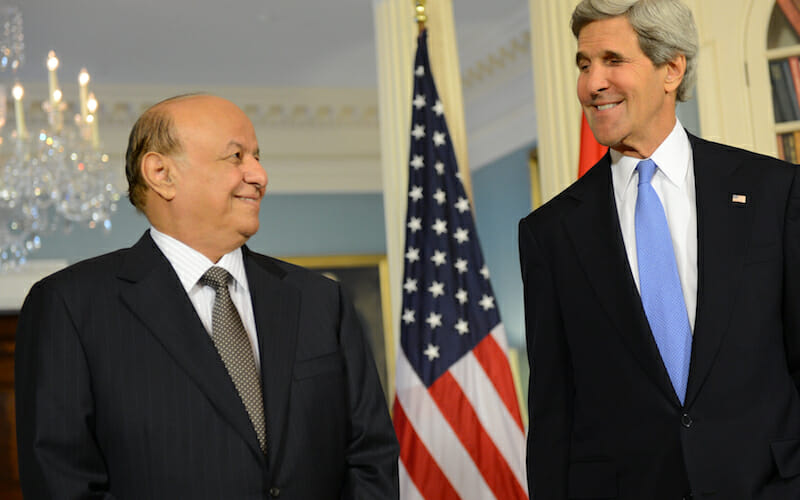
The Tragedy of Yemen
The Houthis emerged within the framework of historical, political, social, religious and ethnic interactions. The Houthis represent the Zaidi branch of Shiite Islam. It is a sectarian minority representing about 25 percent of Yemen’s population.
There are internal factors that contributed indirectly to the emergence of the Houthis, including fierce sectarian rivalries between Sunni and Shiite Islamic groups, which have increased over the last three decades. Saudi Arabia has funded Sunni groups with their Salafi and Muslim Brotherhood branches, while Iran financed the Houthis as a representative of Shiite groups in Yemen and proxies of Iranian foreign policy to export the Iranian Islamic revolution.
Initially, the Houthis actively participated in the Arab Spring uprisings in Yemen and refused to sign the Gulf initiative and participate in the Government of National Reconciliation. Having colluded with the now deceased President Ali Abdullah Saleh, the Houthis carried out a military coup in Sana’a on September 21, 2014 and seized power, leading to a devastating civil war, as well as the intervention of Saudi Arabia in order to support the deposed Yemeni government.
Similar to the Arab Spring revolutions, which swept through Tunisia, Egypt, Libya and Syria, the youth revolution in Yemen broke out on February 11, 2011, seeking to topple the regime of Saleh who ruled the country for 33 years. Houthis hurried to take part in this revolution as this was a golden opportunity to emerge from isolation in Saadah and transform this militia into a peaceful and civilian movement, calling for justice and civil rights and integrating into the fabric of society by adopting revolutionary slogans that aimed to topple the regime peacefully.
The Houthis, however, were more suited for military operations than civilian protests. Houthi followers participated in the National Dialogue Conference under the name of the Ansaru Allah Movement. Houthi followers simultaneously supported leftist and secularist parties, along with Southern independence movements and demanded equality. Several Houthis who participated in the National Dialogue Conference were assassinated like Sheikh Abdul Wahed Abu Ras, Abdul Karim Gadban, and Ahmed Sharafuddin.
The Houthis objected to elements of the National Dialogue Conference and refused new territorial divisions that would have disadvantaged the north. They refused to sign the document that came out of the National Dialogue Conference and demanded a new government, which would represent all the parties and give them the same percentages that they were given in the National Dialogue Conference. When none heeded these demands and objections, the Houthis seized power.
In 2014, the Houthis turned to violence after the end of the National Dialogue Conference. Their aim was to seize power by military force, and beat their traditional enemies – the Reform Party, the Salafist and the Al-Ahmar family. A secret alliance was arranged between Saleh and the Houthis. In January 15, 2014, Al-Houthi followers conquered Dammaj and displaced its Salafi residents, marking the first sectarian crime in the history of modern Yemen. The Houthis subsequently conquered the Kutaf area, the main Salafi center in north Yemen. On September 21, 2014, the Houthis conquered Sana’a after the departure of General Ali Mohsen Al-Ahmar to Saudi Arabia. Jamal Bin Omar met all parties in the presence of President Hadi and signed a peace agreement which led to the formation of a new government to succeed the government of Mohammad Bassandawa.
Events accelerated after the Houthi conquest of Sana’a, as followers extended control to Hodeidah, Raimah, Dhamar, Ibb and Al-Baidha, fighting primarily al-Qaeda. On January 14, 2015, the Houthis kidnapped Awad Ahmed Bin Mubarak, the Director of the Office of President Hadi, under the pretext that he was hindering national partnership. Houthis also shot at the Prime Minister, Khaled Bahah, after his return from a meeting with Hadi and Saleh Al-Sammad, the president’s advisor. On January 20, 2015, the Houthis broke into the presidential palace and besieged Hadi, imposing house arrest on multiple government ministers. On February 6, 2015, the Houthis issued a constitutional declaration which disabled the constitution, isolated Hadi, dissolved parliament and formed revolutionary committees. On February 21, 2015, President Hadi escaped and fled to Aden, which he declared Yemen’s temporary capital. On March 19, 2015, Hadi’s forces regained Aden after violent battles with military units loyal to the former president, Saleh, provoking Houthi expansion to Taiz and then Aden. Heavy fighting took place in the provinces of al-Baidha, Marib, Taiz, Lahj and Al-Dhalea between Houthis and forces loyal to Saleh and Hadi’s supporters. On March 26, 2015, Hadi fled to Saudi Arabia and supported their launching of the Firmness Storm operation against the Houthi rebels which led to the current crisis.
After three years of fierce fighting, the Houthis turned against their ally, Ali Abdullah Saleh, who the Houthis killed in the capital, Sana’a, on December 4, 2017. Saleh’s family accuses the Houthis of assassinating him at the behest of the Iranian government. The Houthis are trying to control Yemen and subject it to Iranian influence, while Saudi Arabia seeks to curtail Iranian influence and weaken the Houthis in order to secure their southern border. Moreover, they seek to control the Straits of Bab al-Mandab and safeguard international navigation in the Red Sea and the operation of the strategic port of Aden.

